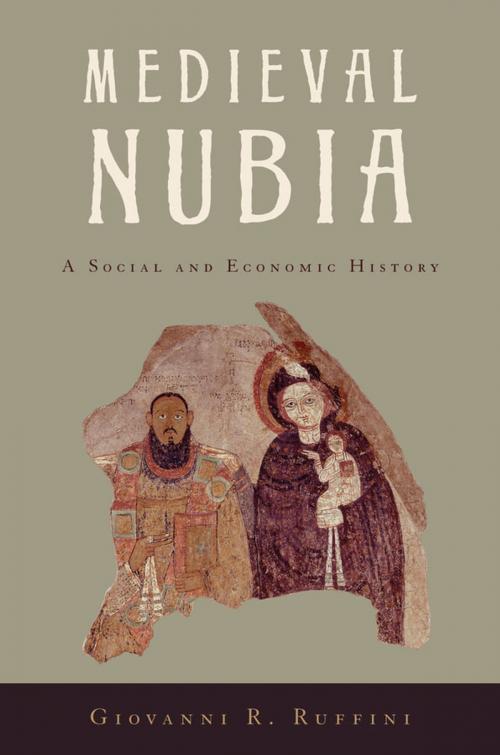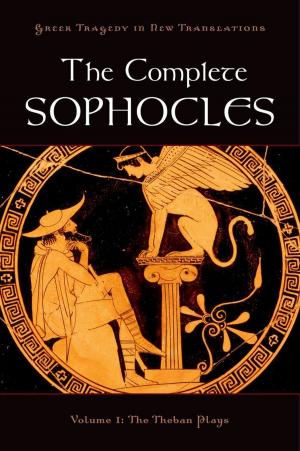Medieval Nubia
A Social and Economic History
Nonfiction, Social & Cultural Studies, Social Science, Archaeology, History, Africa, Ancient History| Author: | Giovanni R. Ruffini | ISBN: | 9780199996209 |
| Publisher: | Oxford University Press | Publication: | September 18, 2012 |
| Imprint: | Oxford University Press | Language: | English |
| Author: | Giovanni R. Ruffini |
| ISBN: | 9780199996209 |
| Publisher: | Oxford University Press |
| Publication: | September 18, 2012 |
| Imprint: | Oxford University Press |
| Language: | English |
As one of the few surviving archaeological sites from the medieval Christian kingdom of Nubia, Qasr Ibrim is critically important in a number of ways. It is the only site in Lower Nubia that remained above water after the completion of the Aswan high dam. In addition, thanks to the aridity of the climate in the area, the site is marked by extraordinary preservation of organic material, especially textual material written on papyrus, leather, and paper. Particularly rich is the textual material from the twelfth and thirteenth centuries CE, written in Old Nubian, the region's indigenous language. As a result, Qasr Ibrim is probably the best documented ancient and medieval site in Africa outside of Egypt and the Maghreb. Medieval Nubia is the first book to make available this remarkable material, much of which is still unpublished. The evidence discovered reveals a more complicated picture of this community than originally thought. Previously, it was accepted that medieval Nubia had existed in relative isolation from the rest of the world, subsisting on a primitive economy. Legal documents, accounts, and letters, however, reveal a complex, monetized economy with exchange rates connected to those of the wider world. Furthermore, they reveal public festive practices, in which lavish feasting and food gifts reinforced the social prestige of the participants. These documents prove medieval Nubia to have been a society combining legal elements inherited from the Greco-Roman world with indigenous African social practices. In reconstructing the social and economic life of medieval Nubia based on the Old Nubian sources from the site, as well as other previously examined materials, Giovanni R. Ruffini corrects previous assumptions and provides a new picture of Nubia, one that links it to the wider Mediterranean economy and society of its time.
As one of the few surviving archaeological sites from the medieval Christian kingdom of Nubia, Qasr Ibrim is critically important in a number of ways. It is the only site in Lower Nubia that remained above water after the completion of the Aswan high dam. In addition, thanks to the aridity of the climate in the area, the site is marked by extraordinary preservation of organic material, especially textual material written on papyrus, leather, and paper. Particularly rich is the textual material from the twelfth and thirteenth centuries CE, written in Old Nubian, the region's indigenous language. As a result, Qasr Ibrim is probably the best documented ancient and medieval site in Africa outside of Egypt and the Maghreb. Medieval Nubia is the first book to make available this remarkable material, much of which is still unpublished. The evidence discovered reveals a more complicated picture of this community than originally thought. Previously, it was accepted that medieval Nubia had existed in relative isolation from the rest of the world, subsisting on a primitive economy. Legal documents, accounts, and letters, however, reveal a complex, monetized economy with exchange rates connected to those of the wider world. Furthermore, they reveal public festive practices, in which lavish feasting and food gifts reinforced the social prestige of the participants. These documents prove medieval Nubia to have been a society combining legal elements inherited from the Greco-Roman world with indigenous African social practices. In reconstructing the social and economic life of medieval Nubia based on the Old Nubian sources from the site, as well as other previously examined materials, Giovanni R. Ruffini corrects previous assumptions and provides a new picture of Nubia, one that links it to the wider Mediterranean economy and society of its time.















